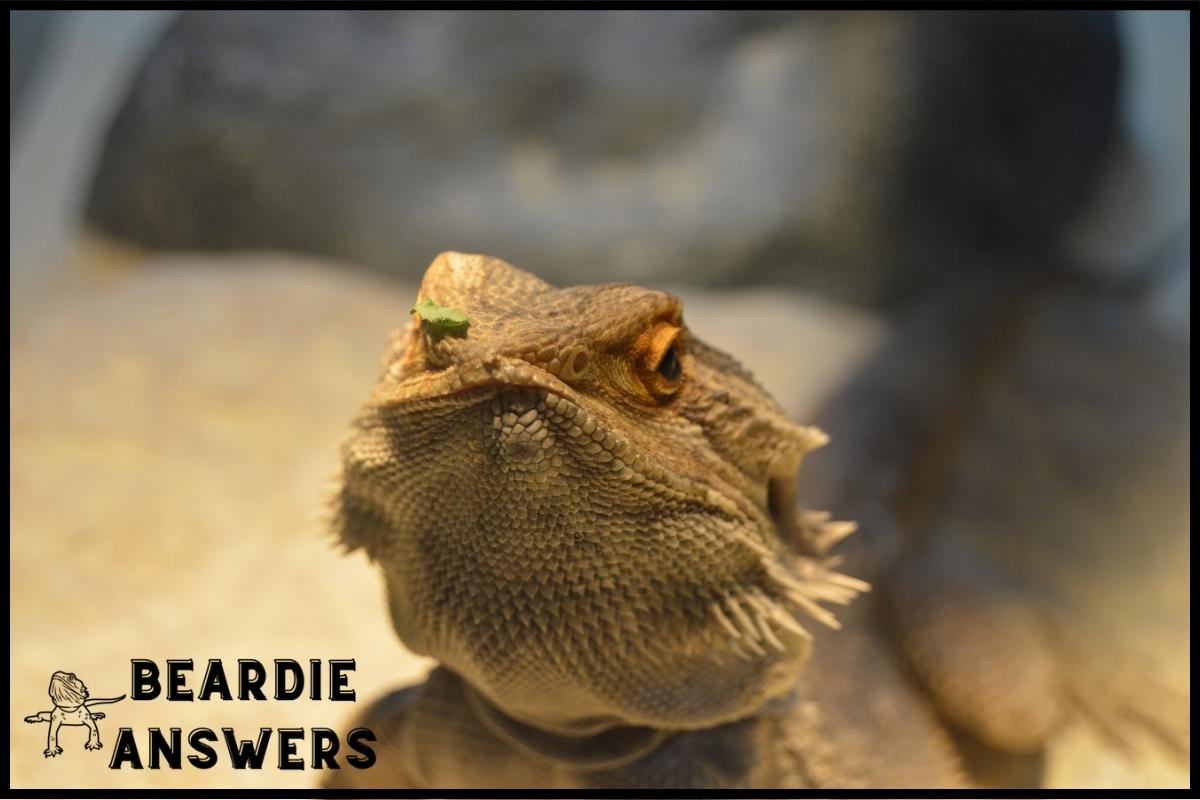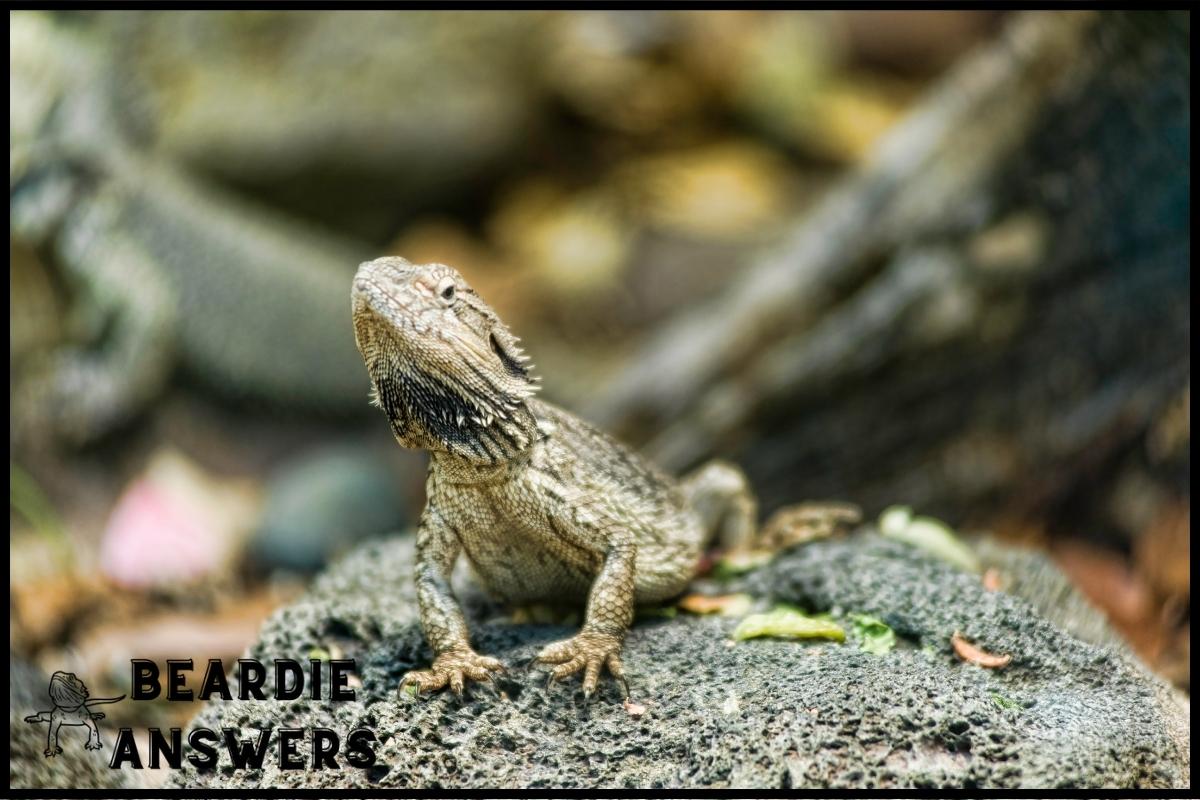Bearded dragons are native to Australia, where they can be found in a range of environments. They typically inhabit arid regions such as deserts and grasslands, but can also be found in woodlands and rocky areas.
What You'll Learn
Where Are Wild Bearded Dragons Found?
First, let’s talk about the habitats in which wild bearded dragons are found. They’re native to Australia, and can be spotted in deserts and woodlands.
Next, let’s discuss their distribution. They’re found throughout the continent, but are particularly common in the inland regions.
Finally, let’s look at some of their adaptations, which help them survive in their natural environment. They can change color and texture to blend in with their surroundings, and store fat and water for times of drought.
Habitats
When you think of a wild bearded dragon, the first thing that comes to mind is probably their natural home: Australia. But just where do these awesome lizards live?
Well, they can be found in many different habitats across the continent, from deserts to woodlands and even rainforests! These areas provide them with everything they need for heat regulation, food sources and shelter.
So if you’re looking for some wild bearded dragons on your next trip Down Under, consider exploring any of these diverse habitats – who knows what interesting reptiles you might find there!
Distribution
The distribution of wild bearded dragons across Australia is quite widespread, and they can be found in many different habitats.
However, the dietary needs and social behavior of these lizards vary depending on what type of environment they are living in.
For example, desert-dwelling dragons eat mostly insects while rainforest-dwellers feed on small vertebrates such as mice or frogs.
In terms of social interaction, some species live alone while others form colonies for protection from predators.
Despite their differences though, all bearded dragon populations have one thing in common: a need to survive in ever changing environments!
Adaptations
To ensure their survival, wild bearded dragons have adapted a variety of strategies.
Their social behaviors depend on the environment they inhabit, with some species living in solitary and others forming colonies for protection.
They also rely on different reproductive cycles, as desert-dwellers tend to breed during summer months while rainforest species reproduce year-round.
Through these adaptations, wild bearded dragons are able to survive even in ever changing environments and continue to thrive today!
Natural Habitats Of Wild Bearded Dragons
Wild bearded dragons are well known for their incredible heat tolerance, which makes them perfectly equipped to live in Australia’s dry and arid regions. They can be found inhabiting deserts and woodlands, where they have access to a variety of different food sources as well as water sources.
In order to survive the harsh conditions of these areas, wild bearded dragons need regular hydration. As such, they often seek out natural water sources like creeks or puddles that occur during rainstorms.
Bearded dragons also prefer living in more open environments with plenty of sunlight exposure. This allows them to bask and regulate their own body temperature more easily than if they were living in dense bushland. They use this sunshine-dependent thermoregulation to stay cool when temperatures get too hot while still being able to warm up quickly on cold days.
Due to their unique adaptations and physiological needs, wild bearded dragons tend to inhabit arid regions most frequently. These habitats provide the necessary amount of warmth and basking spots along with an abundance of prey items and limited competition from other reptiles.
By understanding their ecological requirements it is possible to better protect wild populations from extinction by preserving suitable habitat areas for future generations.
Preference For Arid Areas
Wild bearded dragons are known for their affinity for arid areas. Unlike many other species, these lizards thrive in hot and dry climates due to their heat seeking behaviors. They have a natural tendency to burrow into the ground when temperatures exceed what they’re used to, allowing them to stay cool during extreme weather conditions.
As such, wild bearded dragons can be found in deserts and woodlands with little vegetation – places that offer plenty of sun exposure but still provide shade from the harsh elements. Adaptations for survival play an important role in how wild bearded dragons cope with high levels of heat and drought-like conditions. Some adaptation strategies include increased water storage capacity within their bodies, as well as anatomical features designed specifically to reduce contact with higher ambient temperature surfaces like rock outcroppings or sand dunes.
Additionally, behavioral adaptations such as burrowing behavior allow wild bearded dragons to minimize direct exposure to excessive amounts of sunlight and avoid overheating. Wild bearded dragon populations have grown significantly over the years due to their ability to survive and even thrive despite challenging environmental conditions; however, this success is also dependent on suitable habitat availability.
In order for these reptiles to continue thriving, habitats must remain intact while also providing resources necessary for long term sustainability. With proper management practices in place, it’s possible for wild beardies and other desert dwellers alike to live healthy lives among us humans!
Adaptations For Survival
Bearded dragons, or Pogona Vitticeps, are an iconic species of lizards native to the Australian continent. They have developed remarkable adaptations for surviving in arid and extreme climates over thousands of years.
A perfect example of this is their ability to regulate body temperature by changing color – darkening when it’s cold and lightening when it’s hot.
Moreover, bearded dragons possess a number of characteristics that make them well-suited to life in Australia’s deserts:
- Heat Tolerance: Bearded Dragons can tolerate temperatures up to 115°F (46°C). Their bodies produce less heat than other reptiles, helping them conserve energy during hot days.
- Body Colors: Depending on their environment, they can change colors from shades of yellow and brown to red and orange – allowing them increased camouflage among rocks and sand. This also helps them absorb more sunlight for warmth if needed.
- Behaviors: To escape predators or seek shade during hot summer months, bearded dragons will climb trees or dig into burrows beneath thick vegetation. These behaviors help protect them from both environmental stressors as well as predation.
The combination of these qualities makes wild bearded dragon populations particularly resilient despite harsh natural conditions—thus ensuring their continued survival across the Outback for generations to come.
With conservation efforts becoming increasingly important for many species worldwide, understanding the unique adaptations of wild bearded dragons provides valuable insight into how we can better protect vulnerable wildlife in our own backyard.
Conservation Of Wild Bearded Dragons
Bearded dragons are highly adaptable creatures, allowing them to survive in a variety of habitats. However, these adaptations can only take wild bearded dragons so far. Conservation efforts must be made to ensure the species remains healthy and viable for generations to come.
Habitat destruction is one major threat facing wild bearded dragon populations. Australia’s landscapes have been drastically changed over time due to human developments such as logging, mining, and urbanization. These activities have caused a significant reduction in available habitat for bearded dragons, leading to population declines and local extinctions in some areas.
Climate change also poses serious risks for wild bearded dragons. Rising temperatures can cause droughts that reduce available food sources and make it difficult for individuals to regulate their body temperature properly. In addition, extreme weather events like floods or bushfires become more frequent with climate change, further reducing habitat availability and increasing mortality rates among wild populations.
To protect this iconic Australian species from extinction, conservation action needs to be taken at both the individual and policy-level. Preservation projects should focus on protecting existing suitable habitat while creating new protected areas where possible. In addition, efforts should be made to educate the public about the importance of conserving wildlife and how they can help contribute towards preservation initiatives. Without proper management measures in place, wild bearded dragon populations will continue to decline until they eventually disappear completely from their native lands forever.
Conclusion
In conclusion, wild bearded dragons are an incredible species that have evolved to survive in Australia’s harsh climate. They can be found in a variety of habitats, but they prefer arid environments with plenty of hiding spots and food sources.
These animals have adapted over time to become experts at living in their environment – however, it is our job now to ensure we protect them so these unique lizards may thrive for generations to come.
To emphasize this point, let us remember: conservation efforts today will benefit future generations of both humans and wild bearded dragons alike!

Hi! My name is Bryan, I am the “one behind the words” here are BeardieAnswers.com. I believe that providing quality care and nutrition is the best way to ensure the health of your pet. Every beardie is special and deserves the best care and attention. If you have questions about your bearded dragon, please don’t hesitate to ask! View My Full Author Page




